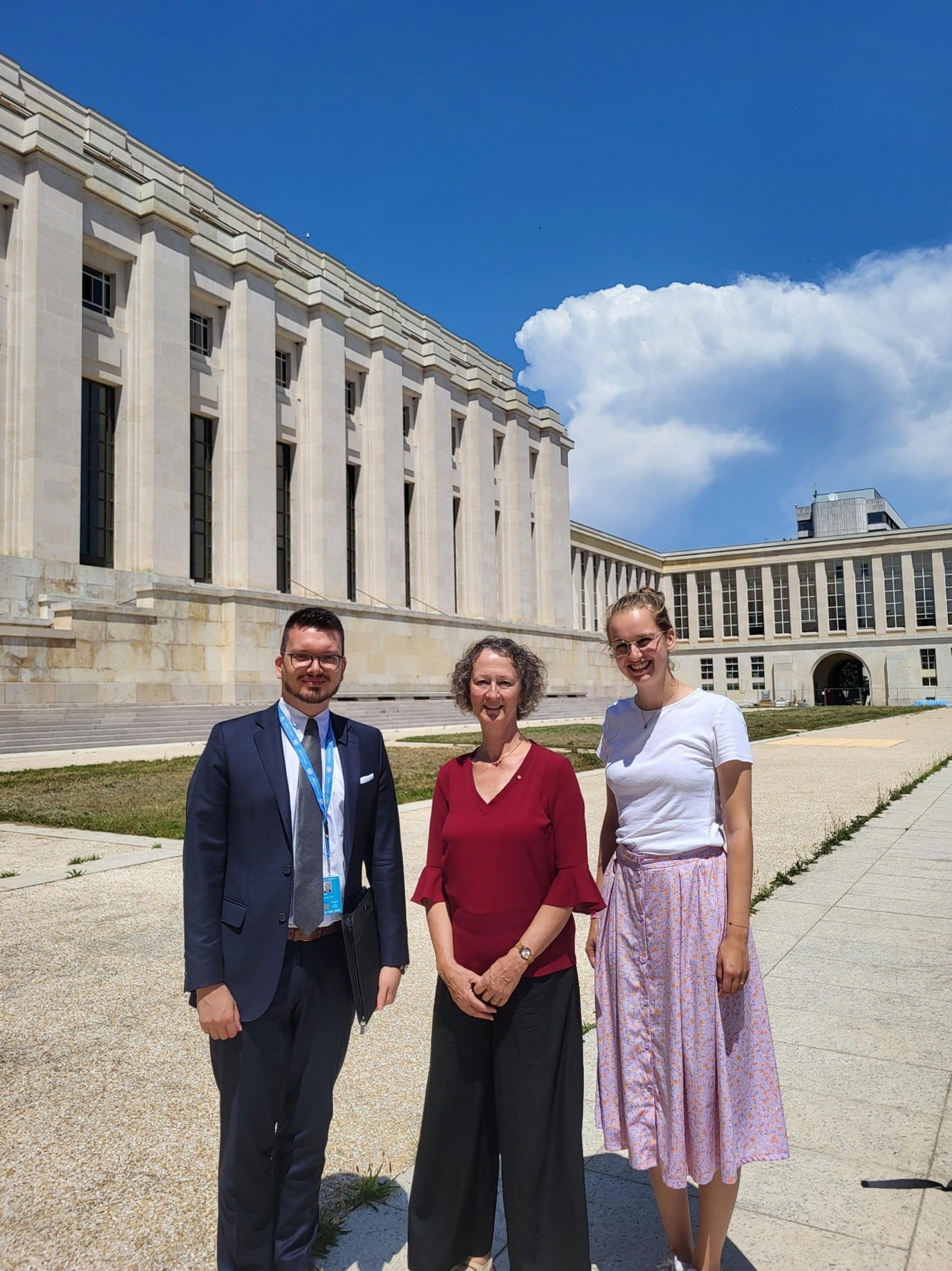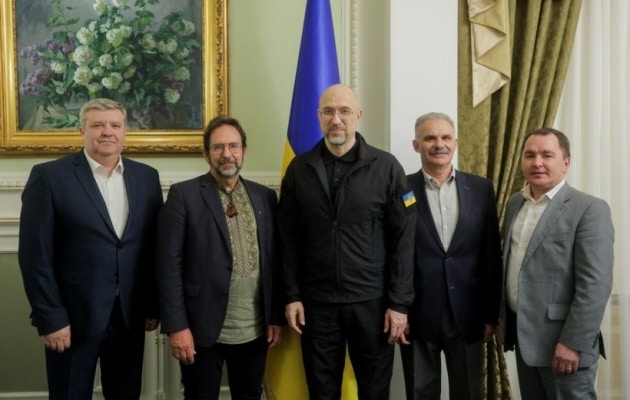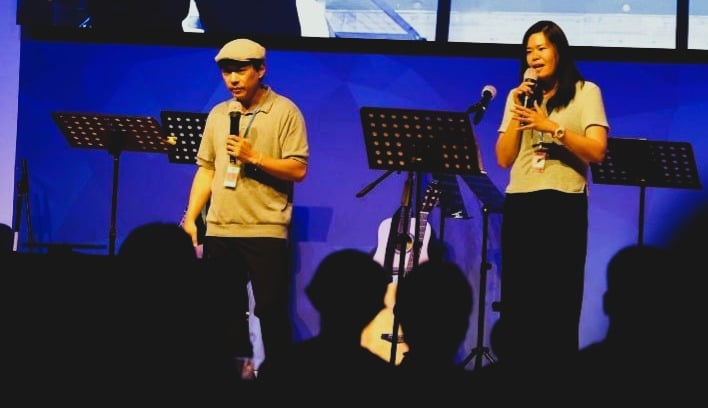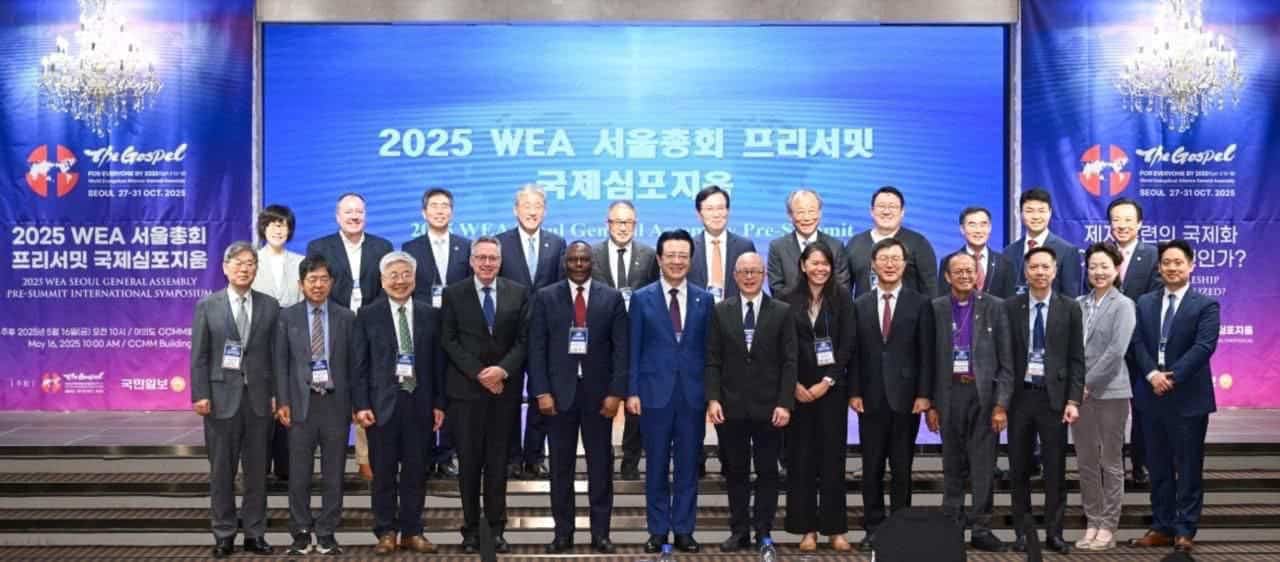By Tom Albinson, President, International Association for Refugees (IAFR)
We live in a time when it is easy to hear and see human suffering. It is all over the news and social media. But hearing and seeing without caring is meaningless. To hear and see suffering and injustice without acting is what it means to have a hard heart.
In his famous parable about the sheep and the goats, Jesus told such people to get away from him. (Mt. 25:41) For the Body of Christ must care about the same things Jesus cares about. And caring means to take action – to actively seek the welfare of those in need.
I’m writing this on the occasion of World Refugee Day 2022 (June 20th). It’s a day set aside for us to reflect on the reality that there are over 100 million people who have been forced to flee their homes due to war, persecution, and gross violations of human rights.(1) They didn’t leave home to find a better life somewhere else. They ran for their lives. Most are women and children.
It’s overwhelming. The world has never before seen so many people in need of refuge.
Perhaps you are asking yourself, What can I do?
Let’s start by conjuring up some hope.
I think most of us would agree this morning that the world is facing a crisis of hope. The global refugee crisis is just one of several overwhelming issues defining the 21st Century.
I want us to find a profound source of hope in a refugee story.
It’s the story of Hagar,(2) a young Egyptian slave girl who was forced to flee the family she served. She fled into the wilderness. She was alone and pregnant. And it was then and there that God called out to her by name. It was then and there that she discovered that God saw her, heard her, and cared for her.
We know this because she named the place: Beer‐lahai‐roi – The well of the Living One who sees me. She then named God: El‐roi – the God who sees. And God told her to name her child: Ishmael – God hears.
God sees, God hears, and God cares.
Even though her troubles were far from over, this revelation changed everything. She discovered that God is active and engaged in time and space and cares about us! Her despair was overcome by hope.
God sees. God hears. And God cares for us. The life, death, and resurrection of Jesus is the ultimate demonstration of this reality. This is good news for all of us – including refugees and asylum seekers in the world today. And it is because we have this hope that we can look at something as overwhelming as the global refugee crisis and ask, What can we do to help?
START WITH PRAYER
Prayer is something every one of us can do. But sometimes we don’t know where to begin. I find it helpful to let Scripture inform my prayers. This helps me pray with confidence that I am praying in alignment with the heart of God.
There are many Scriptures that can help us pray for refugees and asylum seekers. I’m going to share two of them to help us get started.
One of my favorites is Psalm 107: 4‐9.
“Some wandered in desert wastelands,
finding no way to a city where they could settle
They were hungry and thirsty, and their lives ebbed away.
Then they cried out to the Lord in their trouble, and he delivered them from their distress.
God led them by a straight way to a city where they could settle.
Let them give thanks to the Lord for his unfailing love and his wonderful deeds for mankind,
for he satisfies the thirsty and fills the hungry with good things.”
It’s pretty hard to miss how this Psalm speaks to refugees and asylum seekers today. It can help us find words to pray on their behalf.
Our prayer can be as simple as this:
Father, hear their cries.
Lead them to a city where they can settle.
Provide them with the water and food they need today.
Help them know that you see, hear, and care for them – that you are with them.
Another favorite passage is Matthew 25:35‐36, In which Jesus says,
I was hungry and you gave me something to eat,
I was thirsty and you gave me something to drink,
I was a stranger and you invited me in,
I needed clothes and you clothed me,
I was sick and you looked after me,
I was in prison and you came to visit me.
Note how the actions he mentions reflect the critical needs of those who have been forced to flee their homes and homeland (e.g. the need for safety, food, water, clothing, medical care, a warm welcome and hospitality from people in their new surroundings, and a visit from someone to break their isolation). These are all things for which we can pray on behalf of refugees and asylum seekers.
Ask God for opportunities to partner with him in answering our prayers.
As we pray, I challenge us to ask God for opportunities to partner with him in answering our prayers. God seems to enjoy answering that kind of prayer. For God’s primary way of answering prayer and working in the world is through people like us.
ADVOCATE ON BEHALF OF REFUGEES
But we can all do more than pray for refugees and asylum seekers. We can also advocate on their
behalf.
Advocacy is the work of creating space in the hearts and minds of others for refugees and asylum seekers.
A good place for us to start is with the church. Perhaps a Sunday School class or small group could discuss what the Bible has to say about forcibly displaced people? IAFR has resources that can help.
We can also leverage our social media networks – especially on days like World Refugee Day (June 20th). We need to make sure the world knows that the church cares about the welfare of refugees.
Of course, it’s difficult to advocate on behalf of something you don’t know much about. The good news is that there are resources available to help you get better informed and to raise awareness among others. You may find some of the resources on our website helpful (www.IAFR.org/toolbox). Use your influence to create space for refugees in the hearts and minds of others today! Simply post one of the memes, videos, or other resources to your social media!
SERVE REFUGEES
Some of us may have the privilege to do more than pray and advocate on behalf of forcibly displaced people. Some of us may be able to personally engage in ministry among refugees.
I’d like to share a couple of biblical examples of what such work can look like. Of course, this is not an exhaustive list of ways we can serve refugees. But let these examples stir up our imagination when it comes to how we might serve.
Let’s take a quick look at the examples of Reuel (also known as Jethro), Boaz, Nehemiah, Artaxerxes, and Jonathan.
THE EXAMPLE OF REUEL
We meet Reuel soon after Moses became an asylum seeker.(3)
Moses was forced to flee Egypt after killing an Egyptian who was beating a Hebrew slave. Moses fled into the wilderness. He found refuge with the family of a priest in Midian named Reuel – a name that means “Friend of God”. Reuel also went by the name of Jethro. When Reuel heard about Moses, he invited him into his home for a meal.(4) He then invited Moses to stay with them. Reuel also gave Moses a job as a shepherd. Moses ultimately became family – marrying one of Reuel’s daughters. When God called Moses to return to Egypt, Reuel gave him his blessing.(5)
Reuel and his family show us how hospitality is a wonderful starting point when serving refugees. They are a great example of what it looks like to welcome a stranger.
Hospitality is a wonderful starting point when serving refugees.
Pastor Gatera is a former refugee from Burundi. He serves with IAFR today as our Refugee Church Consultant. He has spent most of his life in refugee camps. He tells me that social isolation and loneliness is their biggest challenge. While humanitarian agencies and governmental services provide important assistance to refugees, hospitality is not one of their strengths. That’s why it is important for Christians and churches to show up in the lives of refugees and asylum seekers with a warm welcome
and the offer of hospitality. If we don’t, who will?
Reuel also provided Moses with shelter – inviting him to live with his family. It is clear in the story that Moses received more than shelter – he found belonging with Reuel and his family. Belonging is among the deepest needs of any soul. Lack of belonging tears at the heart of those who have been ripped out of their place in the world.
I have friends who took a young refugee from Congo into their home. He has since become part of their family. They did not need to join an organisation. They simply opened their lives and their home to a refugee. They are following the example of Reuel.
Reuel also employed Moses as a shepherd. Given how Moses grew up in the palaces of Egypt, it is unlikely he knew much about shepherding. Reuel or someone in the family likely taught Moses the ropes before entrusting the sheep and goats to his care. It’s the same today. Many refugees need an opportunity to learn skills that will help them find work in their new context. They often need help finding employment as well.
THE EXAMPLE OF BOAZ
Boaz is a helpful example of a person who actively welcomed a displaced person who came to his city
(Bethlehem). We meet him in the book of Ruth.
You probably remember the story of how Naomi, and her family migrated from Bethlehem to Moab during a famine. When her husband and two sons died, Naomi decided to return to Bethlehem. One of her son’s wives, Ruth, went with her, even though she was a Moabitess and not a Jew. Ruth worked hard to keep food on their table. She followed reapers in the fields gathering up what they dropped or missed.
Boaz saw Ruth and invited her to glean from his fields.(6) He did not look away, chase her away, or accuse her of stealing from his harvest. Nor did he do for her what she could do for herself. But he recognized her vulnerability(7) and was an advocate for her safety. Boaz ordered the young men working his fields to not bother or harm Ruth. And he made sure that they shared their water with her.
Ruth was surprised at his concern for her welfare. Apparently, it was not how people normally treated migrants there.(8) This prompted Ruth to ask him why he was looking out for her.(9) Boaz told her how impressed he was with her hard work and care for Naomi.(10) He affirmed her as a caring and hardworking person. He also recognized the losses she experienced as a migrant. And he let her know that she was welcome and that she had found refuge, safety, and belonging. This had to be meaningful to Ruth – a poor foreigner, an ethnic minority, a woman, and a widow.
Boaz also extended hospitality to Ruth and invited her to join him at his table.(11)
This all took place in a culture that viewed foreign migrants like Ruth with prejudice and suspicion. Many people likely considered migrants to be opportunists and a threat to their culture and economy – perhaps even their national identity. They didn’t want such foreigners to get too comfortable. Boaz challenged his culture and did what he could to create a sense of welcome and safety for Ruth.
Note that Boaz did not view Ruth as helpless. He did not set up a food distribution system of handouts. Rather, he gave her access to the harvest so she could meet her own needs. The vast majority of refugees and asylum seekers do not want handouts. They want work that enables them to meet their needs. Although handouts can help, they often dehumanize people in the process.
This is one of the great pains our friends stuck in refugee camps experience. They are raising their families in a forced dependency on handouts from humanitarian agencies for food, shelter, and even firewood. Many people I know have lived like this for decades.
I will never forget when a Somali friend told me how dehumanizing it is to be dependent on foreign aid. He said that every morning he has to remind himself that he is human. Whenever possible, we should follow the example of Boaz and work to create opportunities for refugees and asylum seekers to meet their own needs.
Boaz recognized that societies often exploit and abuse migrants, refugees, and asylum seekers. He did what he could to protect Ruth by advocating on her behalf and creating a safe space within which she could work. Advocates like Boaz are needed wherever refugees and asylum seekers are found today.
Boaz also empathized with her loss of family and homeland.(12) It is easy for those of us serving refugees to fail to acknowledge the grief that refugees and asylum seekers carry. Our homeland is a deeply rooted part of our identity and soul. Uprooting includes pain and loss – and especially so when forced to flee one’s country. It is healing to feel someone understands our pain.
I met a young couple from Cuba seeking asylum here in the US. The wife was pregnant. They had only been here for a few weeks and did not know anyone. Prior to coming here, they spent months stuck along the Mexico/US border. As we talked, I followed the example of Boaz, and told them how sorry I was that they had to flee their homeland. The wife’s eyes teared up and she said, “thank you”.
I encourage you to read Ruth for yourself (it’s short) and consider how Boaz is an example of someone who actively welcomes and cares for refugees and migrants.
THE EXAMPLE OF NEHEMIAH AND ARTEXERXES
Another way we can help is by partnering with people serving refugees and asylum seekers, including refugees and former refugees themselves. Nehemiah is a great example of this. We find his story in the book of Nehemiah.
Jerusalem was brutally destroyed by the Babylonian army in 597 BC. Many Jews were carried off into exile at the time. 58 years later, Babylon was defeated by the Persians. And the Persian King began to let some of the Jewish exiles return to their homeland. Nehemiah was among the exiled Jews still living in Persia 150 years after the destruction of Jerusalem.
He seems to have integrated well and held an influential job in the royal palace. Still, he identified with and longed for his ancestral homeland. He channeled his grief and longing into his prayers.
When the opportunity arose, he returned to rebuild Jerusalem with the blessing of Artaxerxes, king of Persia. Before going, the king agreed to provide the materials he would need for the rebuilding project.
The trip to Jerusalem was about 1000 miles (1600 km). It took him about two months to get there. When he arrived, he did some research to get a firsthand understanding of the situation. Once he had a plan, he invited the people living in the ruins to join in the project and rebuild the city wall. When they heard him tell how God and the king were behind him, they were encouraged and went to work.
Let’s stop the story here and see what we can learn from it.
Nehemiah is a story of a descendant of exiles going to help returnees – the descendants of exiles who had returned to Israel. Nehemiah chose to leave his home, his job, and related comforts, in order to help his people recover from exile.
I have friends and colleagues like Nehemiah today. They were once refugees themselves. They have devoted their lives to serving refugees.
Sahar, from Iran, is one of them. A former refugee in Greece, she now lives in Athens. She founded a Greek organisation called One Heart, that serves asylum seekers and refugees there.
Insaf, from Iraq, is another. A former refugee in Turkey, she now lives in Canada. She serves refugees in Canada and in the Middle East. Like Nehemiah, her ministry includes helping her people in Iraq rebuild their lives.
Pastor Gatera, from Burundi, was a refugee in Rwanda, Tanzania, and Kenya. He now lives in the USA and serves with IAFR. His ministry is focused on strengthening refugee churches.
Innocent, from Burundi, was a refugee in Malawi. He was able to settle permanently there. He founded a Malawian organisation called There Is Hope. They serve people in a refugee camp and its surrounding host community.
Shahrazad, from Somalia, is yet another Nehemiah. A former refugee in the USA, she now lives in Canada. She serves as a missionary among refugees and asylum seekers there as a trauma care provider.
I could name many more, but I think you get the point. These brothers and sisters are following in the footsteps of Nehemiah. Once refugees themselves, they have devoted their lives to helping others survive and recover from forced displacement.
Nehemiah was empowered to pursue his vision by his financial partnership with king Artaxerxes. Our refugee brothers and sisters also need people to get behind their ministries financially. That is why I mention the important role of people like Artaxerxes. Not everyone is able to go and devote themselves to refugee ministry. But that does not mean we can’t still get deeply involved in the work. Artaxerxes is an example of how generous behind‐the‐ scenes partners make ministry among refugees and asylum
seekers possible.
Behind‐the‐ scenes partners like Artaxerxes make ministry among refugees and asylum seekers possible.
I want to highlight one more lesson from Nehemiah. He did not see the Jews living among the ruins as poor and powerless people. He recognized them to be an important part of the solution to the challenges they faced. He did not go to Jerusalem to do the work for them. He went to do the work with them.
This is a critical mindset of any of us who serve refugees and asylum seekers. We will do well to see the people we serve as valuable partners. We need to see them as an important part of the solution to the challenges they face. Whenever possible, we should partner with them. For refugees are more than people in need.
Refugees are more than people in need
IAFR serves in a couple of refugee camps in Africa. Almost everything we do there is in partnership with refugee churches. They tell us about the challenges they face. And they share with us how they intendto overcome them. We then get behind their vision. They lead and we partner with them.
Refugee churches in Dzaleka refugee camp (Malawi) told us that their children were getting left behind when it comes to their education. They shared with us their vision to establish a school in the camp that would meet this need. They noted how many refugees in the camp were trained and experienced schoolteachers. They just need classrooms and teaching materials. They asked if we could help provide them with building materials. We are now helping them get the supplies they need to build the school. We are following the example of Artaxerxes.
Our brothers and sisters in Kakuma refugee camp (Kenya) told us how they struggle to find building materials for their churches. Most of the churches are built out of mud. The harsh semi desert climate destroys their buildings within a few years. They asked if we could help them get metal sheets with which to build their churches. So, we are inviting the Church‐at‐large to partner with us to that end. Once again, we are following in the footsteps of Artaxerxes.
My point is that it is possible for us to serve refugees and serve with refugees – even in distant locations by following the example of the ministry partnership of Nehemiah and Artaxerxes. Indeed, sometimes the best thing we can do is to get behind a Nehemiah – a refugee or former refugee who has dedicated themselves to serving refugees.
Sometimes the best thing we can do is to get behind a Nehemiah.
THE EXAMPLE OF JONATHAN
In 1 Samuel 23, we read how David was a refugee before he became king of Israel. It begins with David fleeing persecution from king Saul. Like many refugees today, he fled into a harsh semi desert wilderness. And that’s when Jonathan shows up in the story. Jonathan went out into the desert to find David and help him find strength in God.(13)
Jonathan knew that David could not come to him. So, he set out to find David. Many refugees in the world are like David ‐ in remote places that are difficult to access. It is not safe for them to return home. And there are not many countries eager to offer them permanent refuge. So, they are stuck. They are traumatized and isolated.
As a friend in Dzaleka refugee camp (Malawi) once told me, they feel completely forgotten. Humanitarian agencies look after their bodies, providing just enough aid to keep them physically alive. But refugees tell me that one of their daily struggles is to keep hope alive. Our bodies need food, water, shelter, and medical care. But our souls need hope. Delivering hope is not on the agenda of humanitarian agencies. But hope is the currency of the Church. That’s why we must not fail to show up in the lives of refugees and asylum seekers.
Hope is the currency of the Church.
When Jonathan went out to visit David in the desert, he went to help him find strength in God. Jonathan knew that hope is rooted in God. For hope rises up in our hearts when we learn that God sees, hears, and actively cares for us. We can strengthen hope by becoming a tangible expression of that reality to our displaced friends.
Hope rises up in our hearts when we learn that God sees, hears, and actively cares for us.
Many years ago, God used the story of Jonathan to stir my heart to visit Kakuma refugee camp in remote northwestern Kenya. Like Jonathan, I knew I could not solve all of the problems and challenges confronting the people there. But I could still show up and let them know that they were not forgotten. I could listen to them. I could pray with them – and help them find strength in God.
After many years of praying and looking for an opportunity to visit Kakuma, the door finally opened about 11 years ago. We have been partnering with an association of over 160 refugee churches there ever since. While we have accomplished many projects together, I have no doubt that the most important thing we do is to demonstrate that they have not been forgotten by God or by the Church at large.
Like Jonathan, some of us can go to remote places and into detention centers to break the isolation of our forcibly displaced friends.
WHAT CAN WE DO?
Every one of us can do more than follow the news.
o We can all pray for refugees and asylum seekers.
o We can all seek to create space in the hearts and minds of others for refugees and asylum seekers.
o Like Artaxerxes, many of us can support and partner with refugees and others who have dedicated
themselves to serving refugees and asylum seekers.
o Like Reuel and Boaz, some of us can welcome the refugees and asylum seekers that come to our
cities.
o And like Jonathan, some of us can break the isolation of refugees in remote locations and asylum
seekers in detention centers.
And act we must so that every refugee knows that God sees, hears, and cares for them.
“If you spend yourselves on behalf of the hungry and satisfy the needs of the
oppressed, then your light will rise in the darkness, and your night will become like
the noonday.” Isaiah 58:10
(1) Global Trends, Forced Displacement in 2021, UNHCR, page 7. Published in June 2022.
(2) You will find the story of Hagar in Genesis 16 and 21.
(3) You will find this story in Exodus 2.
(4) See Exodus 2:20‐21.
(5) See Exodus 4:18.
(6) Ruth 2:8
(7) Ruth 2:9, 15, and 22
(8) Ruth 2:15
(9) Ruth 2:10
(10) Ruth 2:11
(11) Ruth 2:14
(12) Ruth 2:11
(13) 1 Samuel 23:16





Stay Connected